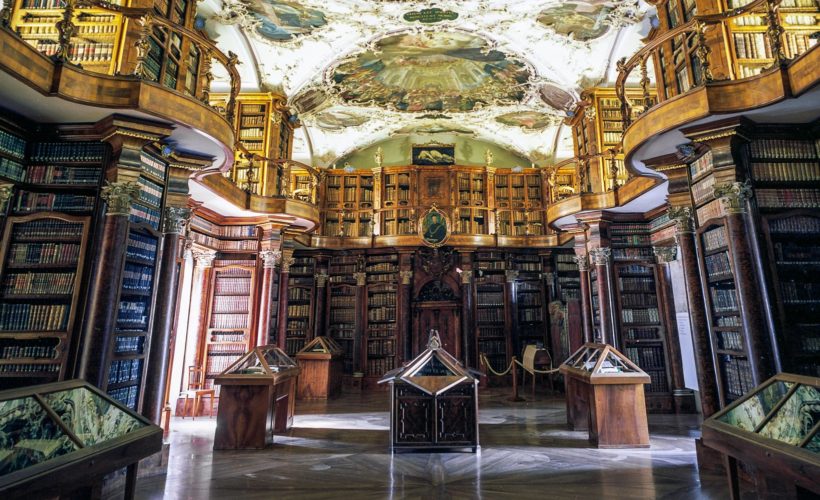Veteran photographer Robert Dawson earned his bona fides in the 1980s and ’90s shooting spectacular images of the American West, often intended to highlight environmental threats such as drought and overdevelopment. Around the turn of the millennium, though, Dawson refocused on a seemingly unrelated subject: libraries. He began traveling across the country, photographing hundreds of them from the modest to the monumental. The project culminated in 2014 with the publication of The Public Library: A Photographic Essay. The Library of Congress ended up purchasing the archive for its permanent collection.
“It wasn’t actually much of a leap for me to go from the commons of the environment to a different type of commons, in this case our cultural commons,” Dawson explains. “As our country gets increasingly commercialized, the library is one of the last real public spaces.”
After exhaustively documenting American libraries, Dawson decided to expand the project worldwide, starting with Europe. He’s spent the past few years criss-crossing the continent from Paris to Moscow, shooting a staggering array of libraries from the ancient to the contemporary, the mundane to the spectacular. Although Dawson included many famous libraries—such as the Baroque-style Abbey Library of Saint Gallen in Switzerland and the ultra-modern, all-white Stuttgart City Library—he had no interest in publishing yet another coffee table book.
“There are many people who photograph and publish books on beautiful libraries all over the world,” he says. “They’re very nice and I like them, but I’m more interested in the stories the libraries have to tell. The physical beauty of the architecture is definitely part of it, but some of the most interesting libraries are not very pretty.”
Take the homely building in Tarnogród, Poland that used to be the city’s Jewish synagogue but was converted after the Holocaust into a library and community center—the sad fate of many other synagogues across Eastern Europe. All that remains of the pre-WWII Zaluski Library in Warsaw is a stone staircase, which Dawson also photographed. “The legacy of [World War II], especially in countries like Poland and Ukraine, is just so overwhelming,” the photographer says.
Dawson was traveling through Europe at the height of the 2016 Syrian refugee crisis, and made a point of visiting as many refugee camps as he could, always looking to photograph the makeshift libraries that had been set up to give migrants access to books and computers. These libraries are often the first place migrants go upon reaching the camp, Dawson was told. “In my experience,” he adds, “the library is usually about the only decent place in the whole camp.”
At the makeshift refugee camp in Calais, France, Dawson found a brightly painted shack called the Jungle Books Library, where a handful of English volunteers had established a place to give language lessons to the adult migrants and tutoring to the children. At a time of rising economic inequality and festering ethnic nationalism, Dawson sees libraries as symbols of democratic engagement—places of connection in what seems an increasingly disconnected world.
“Libraries are especially useful in this moment, because they’re open to everybody,” he says. “They can be a way for us to talk to each other. Throughout the world, they’re symbols of hope.”
More WIRED Photo
- Spellbinding photographs of the world’s most boring neighborhoods
- Here’s how to photograph a lightning bolt
- Ominous views of Japan’s new concrete seawalls
Source:WIRED











